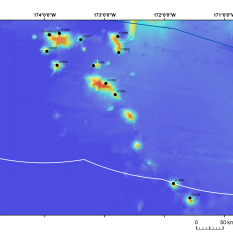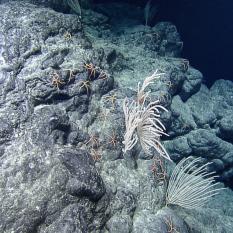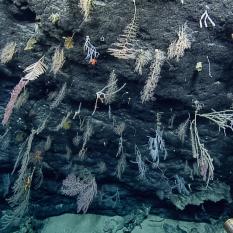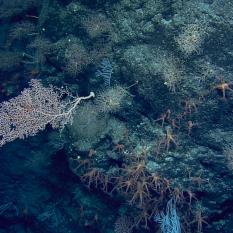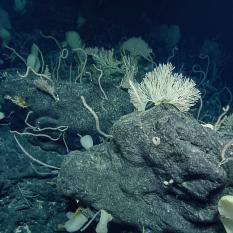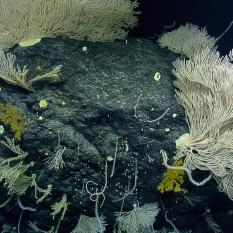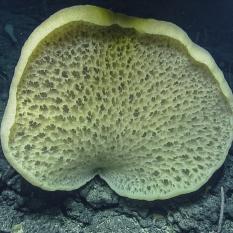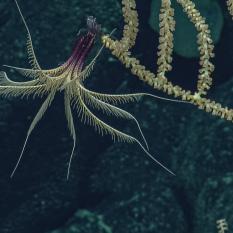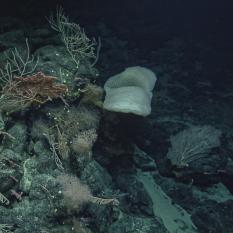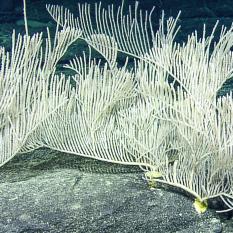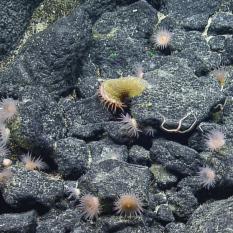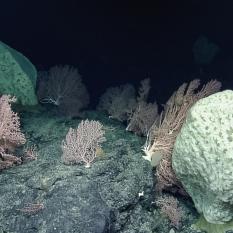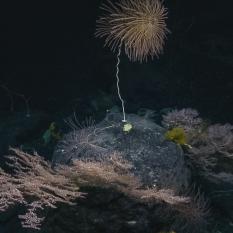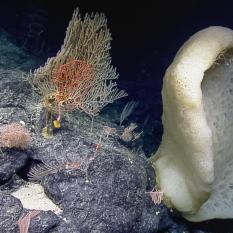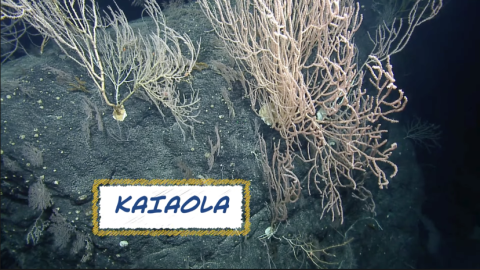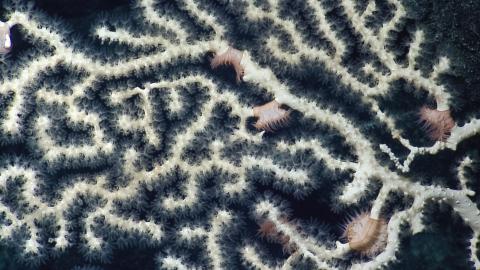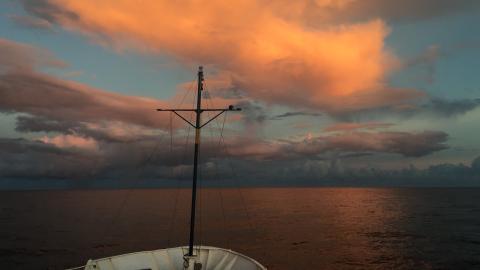Abundance of Life on the Slopes of Voyager Seamounts
Thousands of meters below the surface of the Pacific Ocean in Papahānaumokuākea Marine National Monument, there is no sunlight. The water temperature is just a few degrees above freezing. The pressure is hundreds of times greater than at the surface. What could possibly be expected to survive, let alone thrive, in these conditions?
The Corps of Exploration investigated this question during the Luʻuaeaāhikiikapapakū Expedition by deploying ROVs Hercules and Argus to visit the depths of the monument, carefully observed ridges of several of the Voyager Seamounts south of the Hawaiian chain to document the biodiversity found there. During ROV dives, the cameras revealed massive coral forests and sponge gardens, vibrant communities of varying density and diversity subsisting only on nutrients that are carried by currents into these cold, dark depths.
This expedition was sponsored by NOAA Ocean Exploration through the Ocean Exploration Cooperative Institute and NOAA Office of National Marine Sanctuaries.
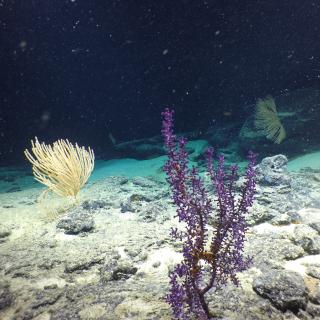
Luʻuaeaahikiikapapakū - Ancient Volcanoes in Papahānaumokuākea Marine National Monument
Returning to Papahānaumokuākea Marine National Monument (PMNM) after an expedition in 2018, our team will be conducting ROV surveys on a chain of seamounts, and document whether these underwater mountains support vibrant coral and sponge communities like others in the region.
